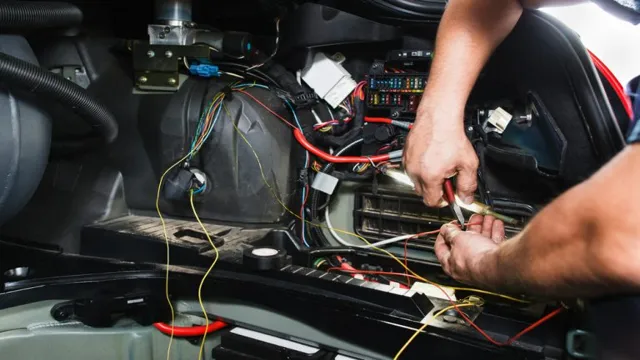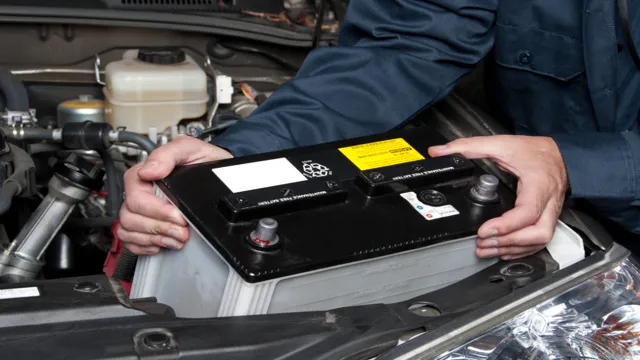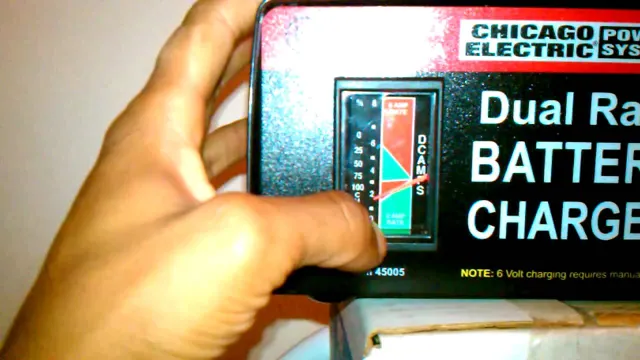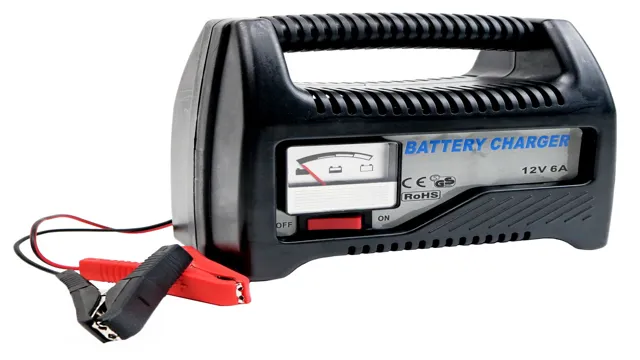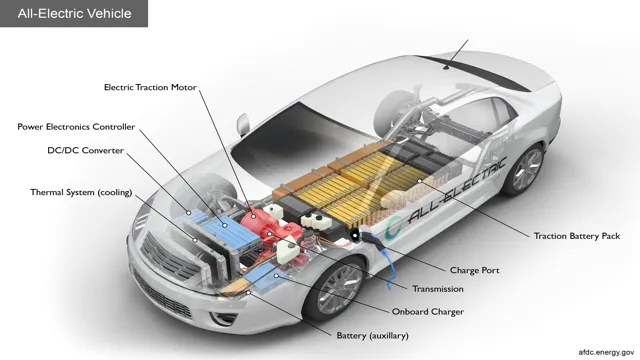Troubleshooting Car Electrical Problems: How a Bad Battery can Cause Major Issues
If you’re experiencing difficulties starting your car, it’s time to check the battery. A bad battery can lead to a host of electrical system problems, making it an essential component to maintain. The battery powers the vehicle’s starter, lights, and ignition system.
If it fails, the car won’t start, and you’ll be left stranded. A weak or failing battery can cause other issues, too. The alternator, which is responsible for charging the battery while the car is running, may be overworked, leading to a premature failure.
In addition, sensors and other electrical components may malfunction, leading to error codes that can be difficult to diagnose. To avoid these issues, it’s important to have your car’s battery checked regularly, particularly if it’s more than a few years old. Simple steps like turning off all electrical components before turning off the engine and not letting the car sit unused for too long can also help prolong its life.
Overall, a bad battery is a common cause of car electrical system problems that should not be ignored. By staying on top of maintenance and promptly replacing a failing battery, you can avoid costly repairs and keep your car running smoothly.
Identifying Electrical System Issues
One common issue with a car’s electrical system is a bad battery. This can cause a ton of problems, from dimming lights to difficulty starting the engine. Battery issues can be caused by a variety of factors, such as age, extreme temperatures, or simply leaving the lights on for too long.
If you suspect that your battery is the issue, it’s important to get it tested and replaced if necessary. It’s also important to regularly maintain and check your battery to prevent any unexpected breakdowns. Don’t let a bad battery leave you stranded on the side of the road – take care of your car’s electrical system to ensure smooth driving.
Common Symptoms of a Bad Car Battery
One of the most critical components of your vehicle is the battery. A car battery powers all of your vehicle’s electrical components, including the ignition, lights, and stereo. When your battery is in good working order, your car runs smoothly, and all of your electrical components function correctly.
Nevertheless, when the battery starts to weaken, you may encounter a variety of warning signs. The most common symptom of a bad car battery is that the engine cranks slowly or won’t start at all. If your car radio, lights, or air conditioning don’t work correctly, your battery could be the culprit.
Additionally, a dead battery may require jump-starting, although, if it occurs regularly, it signifies that you require a new battery. In conclusion, if you observe any of these symptoms in your vehicle, it is essential to bring your car to a reliable technician and have it checked as soon as possible. Don’t let a faulty battery ruin your driving experience; instead, diagnose the issue and deal with it promptly.

Testing Your Car Battery Health
One of the major causes of a car breakdown is a battery failure. And if you don’t want to get stranded on the road, it’s essential to pay attention to the health of your car battery. Testing your car battery regularly can help identify any electrical system issues that might be brewing.
The most straightforward way to check your battery’s health is to use a multimeter, which reads the voltage produced by your car battery. A fully functional battery should produce a voltage between 14 and 1
7 volts. If the voltage reading is lower than this range, your battery might be weak, and it might be time to replace it. Other signs of a failing battery include slow engine cranking, warning lights, and a bloated battery case.
In conclusion, regularly testing your car battery’s health will ensure that you don’t experience a sudden car breakdown, which can be frustrating and costly.
Dealing with a Bad Battery
Car electrical system issues can be frustrating, especially if you’re dealing with a bad battery. A bad battery can cause a host of problems, such as difficulty starting your car or even causing your car to stop running altogether. One way to tell if you have a bad battery is to check your battery voltage, which should be around 1
6 volts. If it measures lower than this, it’s time to replace your battery. In addition to checking your battery voltage, be sure to inspect the battery for any signs of corrosion or leaks.
If you do need to replace your battery, it’s important to choose a quality battery that’s a good match for your vehicle. A quality battery will provide you with reliable performance, helping you avoid any future electrical system issues.
Replacing Your Car Battery
Dealing with a bad battery can be a frustrating and inconvenient experience for any car owner. Signs of a bad battery include dim headlights, slow engine start, and strange noises coming from the engine. If you’re experiencing any of these symptoms, it may be time to replace your car battery.
Replacing a car battery is a simple process that requires a few basic tools, such as a wrench and pliers. However, it’s important to choose the right battery for your vehicle. Consider the make and model of your car, as well as the climate and terrain in which you’ll be driving.
Investing in a high-quality battery can save you time and money in the long run, as it will last longer and perform better than a cheap, low-quality battery. So, be sure to do your research and choose the best option for your car’s needs.
Jumpstarting Your Car Battery
Dealing with a bad car battery can be a real headache, especially if it dies unexpectedly. If this happens, you’ll need to jumpstart it to get it going again. To start, you’ll need a set of jumper cables and another vehicle with a good battery.
Begin by connecting the red jumper cable to the positive (+) terminals of both batteries, followed by connecting the black cable to the negative (-) terminal of the good battery and then the other end to an unpainted metal surface on your car. Once the cables are connected, start the vehicle with the good battery and let it run for a few minutes. Then, start your car.
Let it run for a while before disconnecting the cables. If your battery still isn’t holding a charge, it might be time to replace it. Don’t forget to dispose of the old battery properly, as it can be hazardous to the environment.
With a little know-how and the right tools, jumpstarting your battery can be a breeze.
Using a Battery Charger
If you’re dealing with a bad battery, using a battery charger can save you the hassle of having to replace it altogether. However, before you plug in your battery charger, make sure that your battery is compatible with it and that the charger’s voltage matches up with your battery’s voltage requirements. Once you’ve determined that your charger is suitable for your battery, plug it in and let it work its magic.
Battery chargers are designed to give your battery a slow, steady charge over a period of several hours, gradually restoring it to its full capacity. Keep in mind that charging times can vary depending on the type of battery and charger you’re using, so be patient and follow the instructions provided with your charger. By using a battery charger, you can revive and extend the life of your battery, ensuring that it serves you well for years to come.
Preventing Future Battery Issues
Car electrical system issues with a bad battery can be a real headache for any driver. Not only can they cause inconvenience, but they can also be quite costly to fix. However, there are steps you can take to prevent future battery issues and ensure that your car’s electrical system is functioning properly.
One of the most important things you can do is to regularly check the battery’s water level and keep it properly charged. This simple maintenance task can greatly extend the life of your battery and prevent any future issues. Another important step is to avoid leaving your car parked in extreme temperatures, both hot and cold, which can cause extra strain on the battery and lead to premature failure.
By being proactive and taking these preventative measures, you can avoid the headache and expense of car electrical system issues with a bad battery.
Maintaining Your Car Battery
Maintaining Your Car Battery – Preventing Future Battery Issues Your car battery is an essential component of your vehicle and maintaining it properly will help prolong its lifespan. One of the most effective ways to prevent future battery issues is to keep it clean and free of dirt and debris. Regularly checking the battery for any leaks or cracks can also help you identify underlying issues and address them promptly.
Another important factor to consider is the level of charge in your battery. If it consistently falls below the recommended level, it’s time to replace the battery. It’s also crucial to ensure that the battery’s terminals are tight and free of corrosion.
These simple preventive measures can help you avoid frustrating battery-related issues and keep your car running smoothly. Remember, taking care of your car battery is a small investment that can save you significant expenses down the road.
Investing in a Reliable Battery
Investing in a reliable battery is a crucial step in preventing future battery issues. The last thing anyone needs is for their phone or laptop battery to die in the middle of an important task. But sometimes, no matter how careful we are, batteries fail or degrade over time.
That’s why it’s important to invest in a battery that you can rely on. Look for high-quality brands and ensure that the battery is compatible with your device. It may cost more upfront, but it will save you money and hassle down the line.
Additionally, keeping your device’s battery at a consistent level by avoiding overcharging or letting it reach zero percent can help prolong its lifespan. Remember, a reliable battery is worth the investment.
Conclusion
In conclusion, a car’s electrical system with a bad battery is like a team of superheroes without their power source. Without a functioning battery, the electrical components lose their ability to operate efficiently, resulting in issues such as dimming headlights and difficulty starting the vehicle. So, when it comes to your car’s battery, it’s important to keep it charged and healthy to ensure your vehicle is always ready to save the day.
“
FAQs
What are the common signs of car electrical system issues with a bad battery?
Some common signs include dimming headlights, slow engine crank, dashboard warning lights, and strange noises coming from the battery area.
How can I tell if my car battery is causing electrical issues in my vehicle?
One way to determine if your car battery is causing electrical issues is to test the battery’s voltage level. If it is low, it may not be providing enough power to the electrical components in your car.
What should I do if I suspect my car battery is causing electrical issues?
First, have the battery tested at a reputable auto repair shop to determine if it needs to be replaced. If the battery is fine, there may be other electrical issues that need to be addressed by a mechanic.
Can a bad battery cause damage to other electrical components in my car?
Yes, a bad battery can cause damage to other electrical components such as alternators, starters, and fuses. It is important to address battery issues as soon as possible to prevent further damage.
